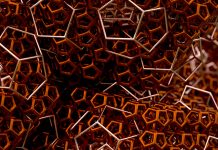Researchers at the University of Waterloo have developed a new device that promises to revolutionise access to clean water in coastal and island communities
Inspired by nature’s water cycle, this energy-efficient device uses solar power to desalinate seawater through a unique evaporation process.
Nature-inspired design
Inspired by how trees transport water, the device mimics nature’s process to continuously produce fresh water. Inducing evaporation and condensation in a closed cycle prevents salt accumulation, a common issue in traditional desalination systems. This innovation ensures higher efficiency and also eliminates the need for frequent maintenance, a significant drawback of current technologies.
Solar-powered efficiency
Powered by solar energy, the device has a 93% conversion rate of sunlight into usable energy, exceeding existing desalination methods. It can produce up to 20 liters of fresh water per square meter daily, meeting the World Health Organization’s recommended amount for basic drinking and hygiene needs.
The device features a specialised construction using nickel foam coated with a conductive polymer and thermoresponsive pollen particles. This unique material absorbs solar radiation across the spectrum, converting it into heat to facilitate water evaporation and transport, similar to capillary action in trees. As a result, salt remains separated at the device’s base, ensuring uninterrupted operation.
“This new device is not only efficient but also portable, making it ideal for use in remote regions where access to fresh water is limited,” Dr. Yuning Li, a professor in Waterloo’s Department of Chemical Engineering said. “This technology offers a sustainable solution to the emerging water crisis.”
Future prospects
With plans to develop a prototype for sea deployment, the researchers aim to validate their technology on a larger scale. If successful, this innovation could provide sustainable access to fresh water, aligning with several UN Sustainable Development Goals related to clean water and sustainable communities.
In addressing global water scarcity challenges, the University of Waterloo’s breakthrough offers a promising solution. By combining nature-inspired design with cutting-edge technology, the device represents a significant step towards ensuring reliable access to clean water, particularly in remote and underserved regions worldwide.











